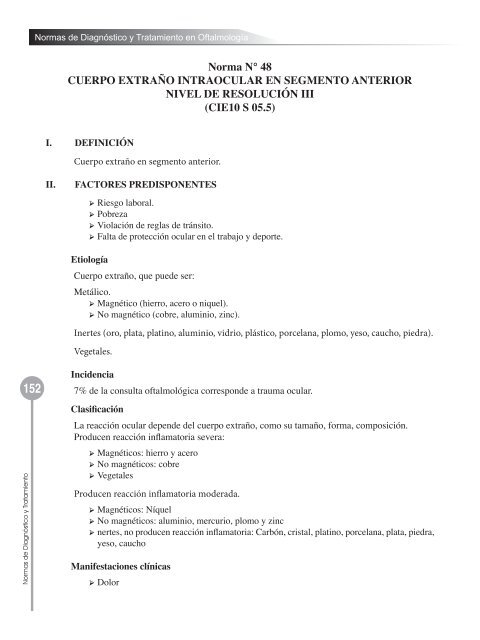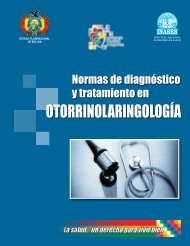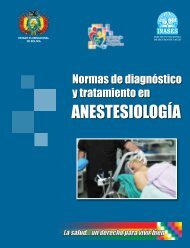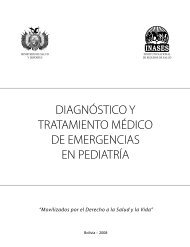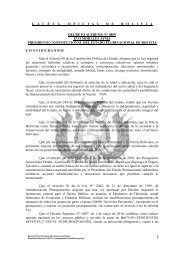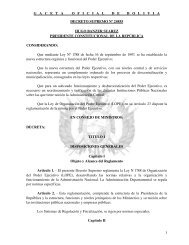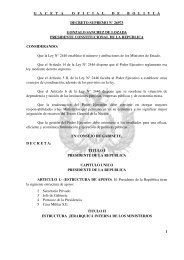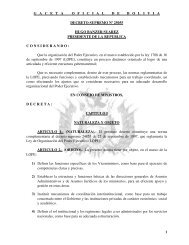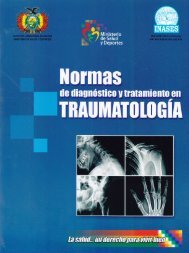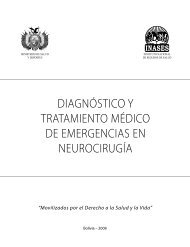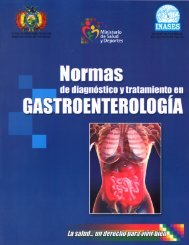Diagnóstico Tratamiento
Normas de Diagnóstico y Tratamiento en OftalmologÃa - inases
Normas de Diagnóstico y Tratamiento en OftalmologÃa - inases
- No tags were found...
Create successful ePaper yourself
Turn your PDF publications into a flip-book with our unique Google optimized e-Paper software.
Normas de <strong>Diagnóstico</strong> y <strong>Tratamiento</strong> en Oftalmología<br />
Norma N° 48<br />
CUERPO EXTRAÑO INTRAOCULAR EN SEGMENTO ANTERIOR<br />
NIVEL DE RESOLUCIÓN III<br />
(CIE10 S 05.5)<br />
I. DEFINICIÓN<br />
Cuerpo extraño en segmento anterior.<br />
II.<br />
FACTORES PREDISPONENTES<br />
➢➢Riesgo laboral.<br />
➢➢Pobreza<br />
➢➢Violación de reglas de tránsito.<br />
➢➢Falta de protección ocular en el trabajo y deporte.<br />
Etiología<br />
Cuerpo extraño, que puede ser:<br />
Metálico.<br />
➢➢Magnético (hierro, acero o niquel).<br />
➢➢No magnético (cobre, aluminio, zinc).<br />
Inertes (oro, plata, platino, aluminio, vidrio, plástico, porcelana, plomo, yeso, caucho, piedra).<br />
Vegetales.<br />
152<br />
Normas de <strong>Diagnóstico</strong> y <strong>Tratamiento</strong><br />
Incidencia<br />
7% de la consulta oftalmológica corresponde a trauma ocular.<br />
Clasificación<br />
La reacción ocular depende del cuerpo extraño, como su tamaño, forma, composición.<br />
Producen reacción inflamatoria severa:<br />
➢➢Magnéticos: hierro y acero<br />
➢➢No magnéticos: cobre<br />
➢➢Vegetales<br />
Producen reacción inflamatoria moderada.<br />
➢➢Magnéticos: Níquel<br />
➢➢No magnéticos: aluminio, mercurio, plomo y zinc<br />
➢➢nertes, no producen reacción inflamatoria: Carbón, cristal, platino, porcelana, plata, piedra,<br />
yeso, caucho<br />
Manifestaciones clínicas<br />
➢➢Dolor


